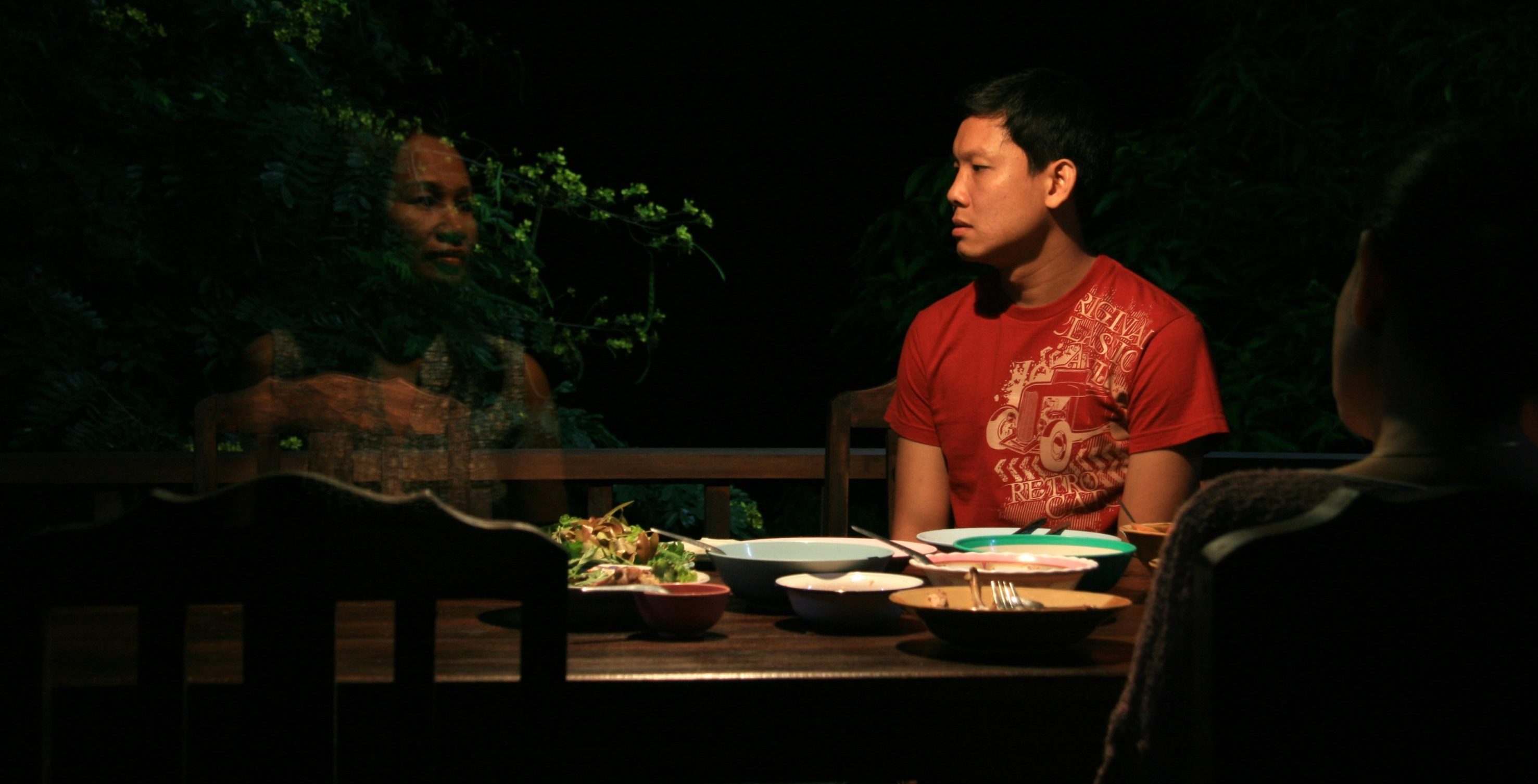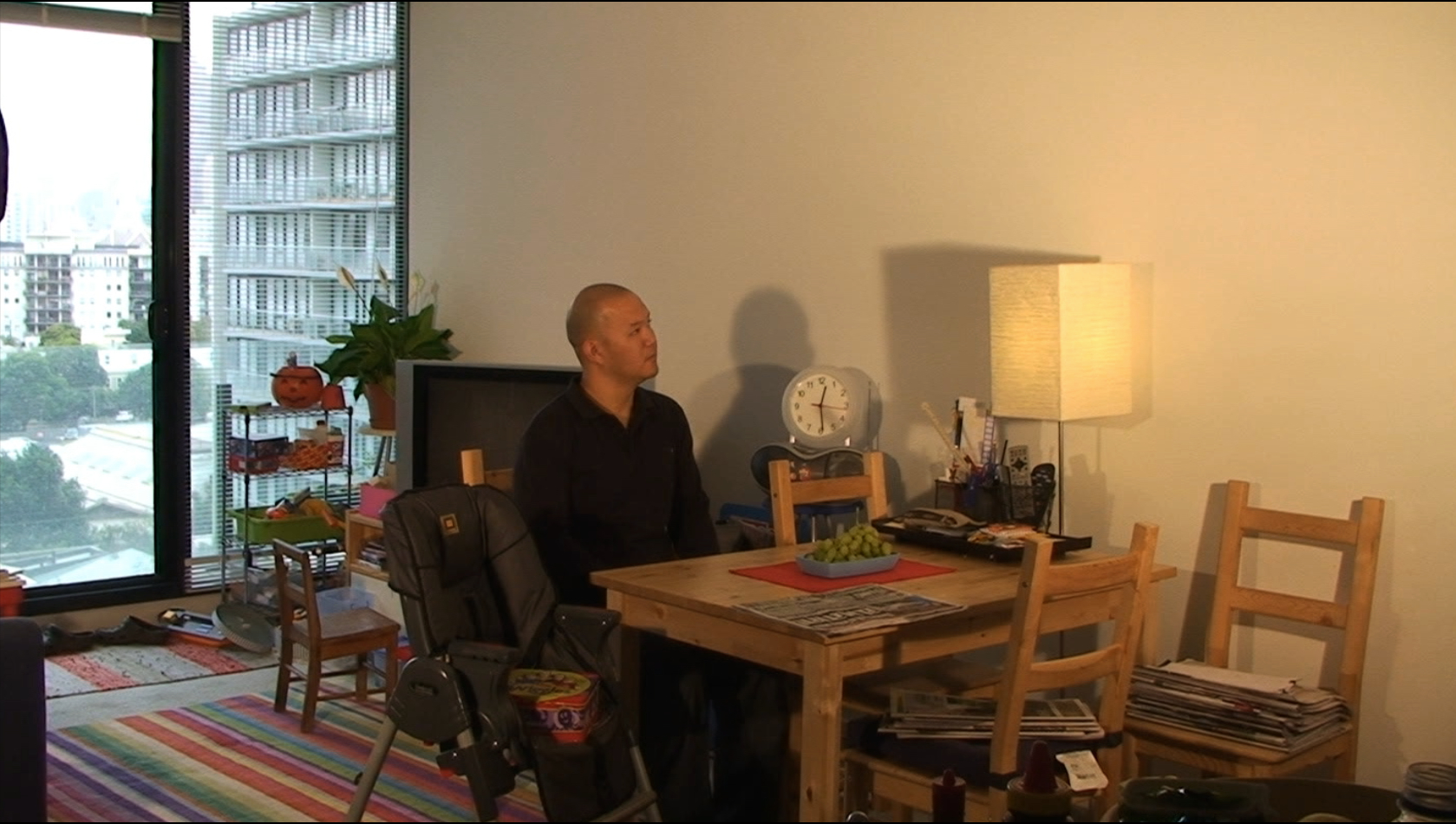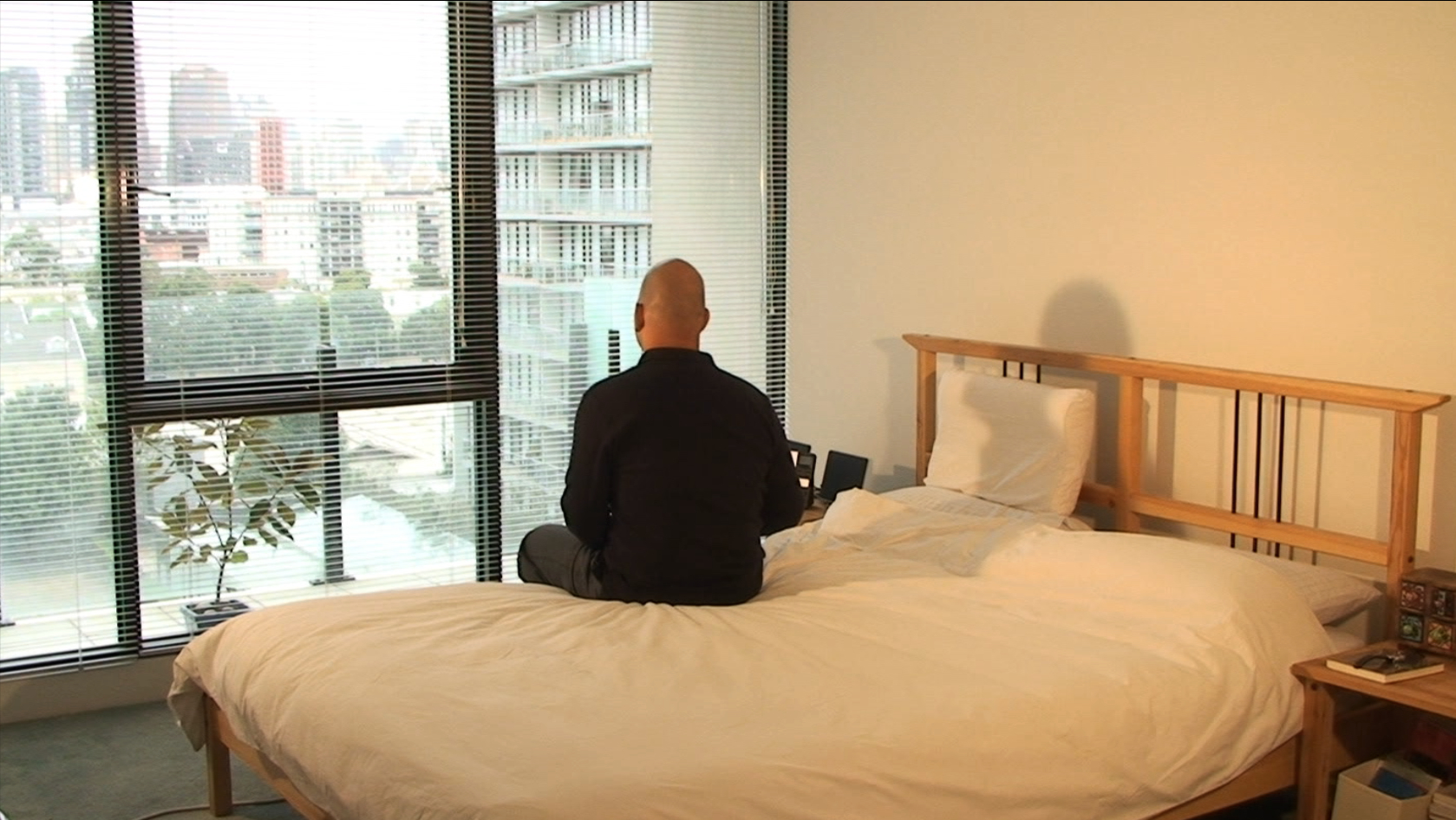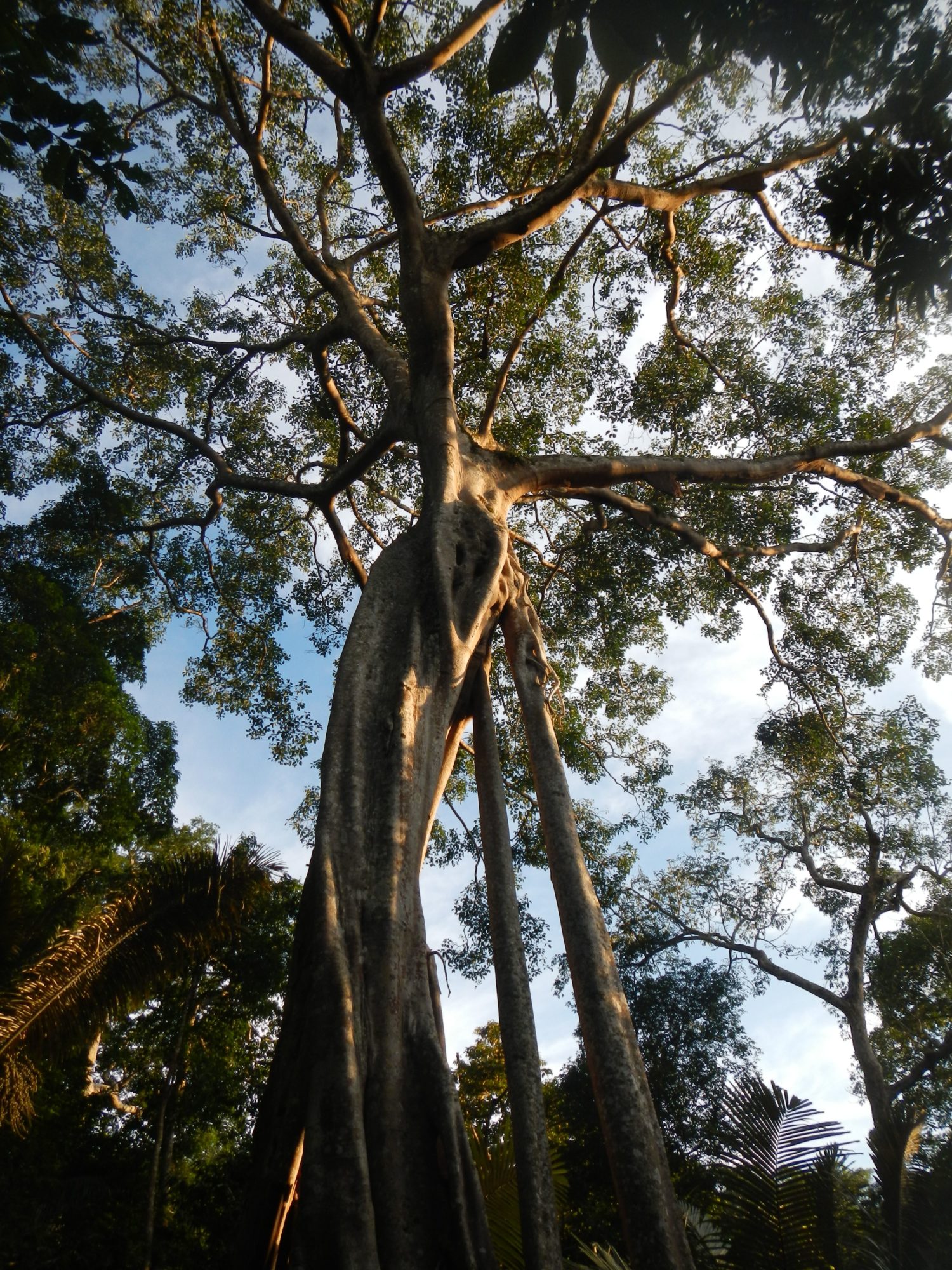Cyclical Time: the Trap

Apichatpong Weerasethakul, still from “Uncle Boonmee Who Can Recall His Past Lives,” 2010, film [courtesy of Kick the Machine Films]
Share:
The perception of time as samsāra, or cyclical world, is at the core of Theravada Buddhism and differs from the Western perception of time as a linear conception. In this world, which revolves from birth to death and rebirth, one has to find a way to free oneself from this repetitive cycle. Buddhism is a practical method for liberating oneself from suffering by coming to realize the true nature of things. The three doctrines of Buddhist teaching are impermanence (anicca), dissatisfaction or suffering (dukkha), and non-selfhood (anatta). All things are impermanent. Twentieth-century Thai philosopher Buddhadasa Bhikku pointed out that everything changes perpetually and that there is no entity or self that remains unchanged for even an instant.1 This religious principle constitutes our thinking and means that our conception of time operates distinctly and obviously in a loop. In the flux of globalization, living with the belief of a cyclical world creates a strong sense of paradox in our daily lives. A belief in the next life or reincarnation stimulates people’s hope for the future, so they make merit in this life, as a deposit for good karma, in order to have a better life in the future.
Prapon (Joe) Kumjim, still from “You Sit I Kneel,” 2009, site-specific, four-screen with four-channel, synchronized HD video looped installation [courtesy of the artist]
Overlapping time
Secularization has never existed in Thailand. Buddhism was made the national religion in the late 18th century. Religion became one of the three ideologies to secure the existence of the state, the others being nation building and the monarchy. Spiritually and mentally, Thais became closely connected to the Buddhist religion. Even today, Thailand’s calendar and national holidays are based on Buddhist religious days and royal celebrations. Thus, the duality of time in the religious and the monarchical world play crucial roles both in the country’s recent history and in our everyday lives.
Buddhism is ephemeral in the sense that it teaches one to live in the moment and to be at all times aware and cautious of oneself. But what happens in reality, especially in politics, contradicts such beliefs. Even though many countries are Buddhist, they are governed under systems of military dictatorship, socialism, communism, and constitutional monarchy. These regimes do not follow the idea of time in Buddhism, which is temporary and thus always changeable. Instead, the leaders of these countries hold on to their power by extending their time in office, resisting time as a temporary condition. Thailand’s monarchy system, Myanmar’s military government, and Cambodia’s communist state are among the longest-lasting regimes in the world. No one understands why they resist the natural law by freezing their time. Questions could be asked as to why there are no revolutions in these countries and why people are so patient, seemingly unaware of the contradiction between the static political situation and temporary time as a Buddhist concept.
Attempts to change the balance of power, such as Thailand’s student uprising against the military dictatorship in the 1970s, were not successful. Neither was the “8888 uprising,” staged by students in 1988 and the “Saffron Revolution,” led by monks in 2007, both in Myanmar. In fact, these attempts served to strengthen the respective governments, resulting in the longest reign of the monarchy in Thailand and rule by military dictatorship and SPDC/ SLORC (State Peace and Development Council/ State Law and Order Restoration Council ) in Myanmar. But at least Myanmar has become aware of its freezing of time and has made changes within its own system, releasing democracy icon Aung San Suu Kyi and gradually opening its doors to the global economy. Thailand’s insecure political situation has shaken the faith of other countries, and we continue to strive for change from the grassroots level, while the elite and upper middle classes still want to keep hold of the status quo.
Prapon (Joe) Kumjim, still from “You Sit I Kneel,” 2009, site-specific, four-screen with four-channel, synchronized HD video looped installation [courtesy of the artist]
Many Thai artists have demonstrated the idea of overlapping time in our contemporary society. The overlapping and crossing of time between different dimensions of the universe in Thai Buddhist and animist beliefs is well demonstrated in Apichatpong Weerasethakul’s Uncle Boonmee Who Can Recall His Past Lives, 2010. Based on the idea of reincarnation, Apichatpong projects a miraculous scene showing Uncle Boonmee, his relatives and Laotian aides at the dinner table having a conversation with his son, who has changed into the monkey ghost, and his dead wife, who reappears as a spirit. This surreal scene encapsulates and vividly represents the perception and consciousness of time in Thai society. Even though our country has been semi-modernized since the end of the 19th century, it is only a façade of modernization. The belief in ghosts and the last life, reincarnation as well as the constant loop of birth, age, pain and death is as much part of our psyche as belief in the next life. The idea of looping and repetition in cyclical time is appropriately exemplified by our political system. We are notably world leaders of coups d’état, having staged 19 of them since the 1930s.
Sompot Chidgasornpongse’s 16-minute video Bangkok in the Evening, 2005, depicts an important ritual in Thai society. For the video, the artist handed out six video cameras to his friends to document people in Bangkok’s public spaces at 6pm, a time when they have to stop their activities and stand still for the daily national anthem. To these images, Sompot adds French composer Erik Satie’s repetitive music, corresponding with the cyclical nature of this ritual, to which Thai people have had to adhere for the last 50 years. In a sense, the video is a document of a performance in a public space, offering a reflection on a collective nationalist ritual. It shows us how the mechanisms of power have been exercised by the state to control its citizens on a daily basis. It’s the sign of a resistant form of the temporality of time, serving merely to instill a sense of patriotism. Sompot Chidgasornpongse’s work is one of many examples of how young artists are aware of ideas of nationalism and the ways in which censorship and self-censorship have played vital roles in their work since 2000.
Wit Pimkanchanapong, stills from “Honey, a study of my father,” 2012, video installation [courtesy of the artist]
In response to changing regional identities due to dislocation in the post-cold war period marked by globalization, and inspired by Andy Warhol’s concept of expanding the filmic experience into cinematic happenings of eight or more hours, Prapon (Joe) Kumjim investigates time in relationship to lens-based media. In My Time is Not Your Time: cultural hybridity through the lens of an itinerant, 2009, he presents a fragmented vision of his own life experience and transcultural sense of understanding. The final video piece in this project consists of a four-screen projection representing corners of his Melbourne home. This video loop consists of two cyclic versions without beginning or end. One of the loops depicts the artist at home with empty walls and no obvious sign of Thai memorabilia. The second loop shows an almost identical staging with an additional portrait of the Thai monarchy included in the video frame. Ambient noise fluctuates between the four screens to create a sense of dislocation and to disrupt the viewing experience. The Thai diaspora, forced into exile for political, social and economic reasons, closely identified with the transcultural experience exposed in this piece, as the artist learned. Prapon carefully constructed that identity and dealt subtly with the absence and presence of the image of monarchy, which normally suggests and defines Thai-ness within and outside the country. The video loop also juxtaposes the nuances of patriotism and the negation of that idea.
Wit Pimkanchanapong, stills from “Honey, a study of my father,” 2012, video installation [courtesy of the artist]
In contrast to Prapon’s approach to time and space, media artist Wit Pimkanchanapong created an interactive video work, Honey: a study of my father, 2012. This documentary piece shows images of the artist’s father, a forest official, hunting for honey on a moonlit night of month 5th. Together with this video, Pimkanchanapong installs 2,012 small tubes of honey to be shared with viewers. Each time a viewer takes away one of these honey tubes, twelve random frames of the film disappear and are replaced by black frames. Gradually, as the numbers of honey tubes decrease, the images on the screen turn dark.2 In so doing, the artist plays with the nature of video as a medium to capture and freeze time and space on the screen, deconstructing it to correspond with reality.
It’s interesting to see how artists try to play but are yet unable to break with the trap of the cyclical world. This shows that the idea of time in the Buddhist animist sense is influential and still underscores the work of many media-based artists. Although they use different approaches toward cyclical time and spaces, they are obviously able to unravel their experience of our time in daily life, which is complex and paradoxical. However, there are a few artists whose work shows the contradictory condition of every life. They attempt to demystify the layers constructed by the state which utilizes the notion of cyclical time in the Buddhist tradition as tools for control and subjugation. In the end, our experience of time as cyclical is unchanged and we remain trapped in this belief system, as we still have to get good karma to pay forward for the next life.
Gridthiya Gaweewong has curated art exhibitions and film festivals including Under Construction (Tokyo, 2002); Politics of Fun (Berlin, 2005); Bangkok Experimental Film Festival (1997-2007); Saigon Open City (Saigon, 2006-2007); Unreal Asia (Oberhausen, Germany, 2009); Between Utopia and Dystopia (Mexico City, 2011). She currently lives and works in Bangkok, Thailand.
Edited by Luci Stanley
This article originally appeared in ART PAPERS January/February 2013.



